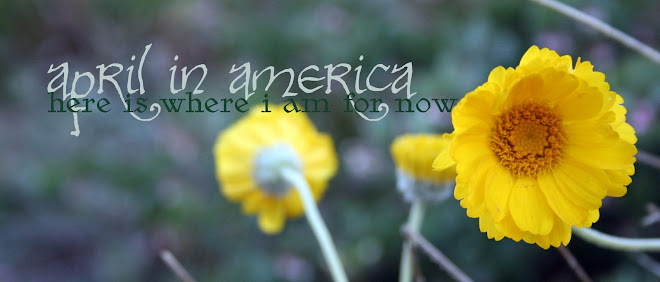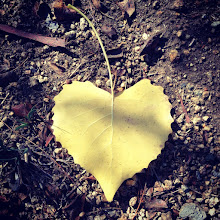I have a new job for this summer: assisting the forest botanists with mapping and removing invasive plants in the Station Fire burn area. It isn't glamorous (and neither am i at the end of the work day!) but it's got to be done. And, while it isn't a permanent job, i'm very happy to be employed doing something useful, and being in the same place as my former job.
Monday was my first official day of not being a landscape architect and being a bio tech instead. Katie and i hiked for almost 12 hours down one drainage and up another looking for weeds near Mt. Gleason and the Pacific Crest Trail. We saw the usual suspects of bromes and cheat grass, various mustards, tree tobacco, dandelions...we also saw a garter snake, a rattle snake (we heard it before we saw it, oops), bear tracks, bear scat (thrice), a swarm of bees moving overhead, and a ringtail cat. It was a crazy long day but kinda fun after the fact, and definitely an adventure. The hiking was steep and crumbly, we crawled down more granite waterfalls than i care to count, we didn't get back to our truck until 10:30 p.m. and i've never been so happy to see an overside drain as i was as we hiked up a drainage to the road! I'm glad i've been bouldering, though, because it's helped my confidence, grip, and sense of balance as we clamber down and over the waterfalls. I can scout ahead sometimes to see if Katie can do it (she's tough, but she had knee surgery recently and needs to be more cautious than normal). Without being able to do that, we'd have to quit and retrace our steps each day.
Today wasn't such a good day. We found some terrible weeds in a stream: salt cedar, bull thistle, and arundo. And ivy, and vinca, and the invasive grasses, and tree tobacco, spanish broom, virginia creeper, eupatorium, and two kinds of mustard. Because we kept finding seedlings of the terrible three we had to look at the ground very closely, and that meant progress was slow. Oh well. We pulled up and took GPS points of what we found, and we have the rest of the summer to keep going. Thankfully there was no perennial pepperweed: i think we would have cried.
A lot of the weeds we're looking for are annual plants that sprout in spring, bloom in the summer, and that's when you find them. That's why we're looking during the summer (that, and the funding ends September 30). If there's a small group of them, sometimes we pull them out if they haven't set seeds yet (or if they've set seeds but they won't be scattered far-and-wide by pulling 'em up). Then we put then in heavy black plastic trash bags and haul them with us as we hike along the rest of the day. I find myself hoping things haven't set seed, because then we can just uproot them and leave them to decompose right there, returning the nutrients they stole from the sparse soil.
Why do this? Well, for a few reasons. Weeds aren't just a tree-hugger issue: in range and farm land they affect the value of a hay or food crop, and some can actually kill animals that eat them. Others suck a ton of water out of our streams (and my socks can testify to the fact that there is water in the San Gabriels). Less water is no good: some of your drinking water may come from these mountains. Weeds also burn more frequently than native vegetation, which is hardly a situation we need down here. More fires mean our air and water is more polluted. Plus, these invasive plants don't support wildlife. Foodwebs are important! My arms are covered with mosquito bites that attest to the fact that tadpoles and birds are useful creatures.
I'm one thirsty, hungry, grubby girl at the end of each day. :) I still have ashes under my fingernails from Monday, despite three showers and several passes with a fingernail brush. My shins are bruised from running into fallen trees while looking at the ground and from all the rock climbing. My hiking shoes are filthy. But boy, do i have an endorphin high from all that exercise! :) And did i say i'm super happy to have a job?
Wednesday, June 23, 2010
Subscribe to:
Post Comments (Atom)
birding life list (in process!)
- White-crowned Sparrow (Zonotrichia ?) in winter
- Western Wood-Pewee (Contopu sordidulus)
- Western Tanager (Piranga ludoviciana)
- Western Scrub Jay (Aphelocoma californica)
- Western Bluebird (Sialia mexicana)
- Tufted Titmouse (Baeolophus bicolor)
- Stellar's Jay (Cyanocitta stelleri)
- Sparkling Violetear (Colibri coruscans)
- Snowy Owl (Nyctea scandiaca)
- Snowy Egret (Egretta thula)
- Ruddy Duck (Oxyura jamaicensis)
- Red-winged Blackbird (Agelaius phoeniceus)
- Red-tailed Hawk (Buteo jamaicensis)
- Pied Crow (Corvus albus)
- Northern Mockingbird (Mimus polyglottos)
- Northern Cardinal (Cardinalis cardinalis)
- Mourning Dove (Zenaida macroura)
- Mallard (Anas platyrhynochos)
- male Superb Sunbird (Cinnyris superbus) i think
- Malachite Kingfisher (Alcedo cristata)
- Lesser Goldfinch, greenbacked (Carduelis psaltria)
- Lazuli Bunting (Passerina amoena)
- Indigo Bunting (Passerina cyanea)
- House Finch (Carpodacus mexicanus)
- Hooded Oriole (Icterus cucullatus nelsoni)
- Greater Roadrunner (Geococcyx califorianus)
- Great Horned Owl (Bubo virginianus)
- Great Blue Heron (Ardea herodias)
- Congo African Grey (Psittacus erithacus erithacus)
- Common Garden Bulbul (Pychonotus barbatus)
- Cinnamon Teal (Anas cyanoptera)
- Cattle Egret (Bubulcus ibis)
- Canada Goose (Branta canadensis)
- California Towhee, juvenile (Pipilo crissalis)
- California Thrasher (Toxostoma redivivum)
- Brown Pelican (Pelecanus occidentalis)
- Blue Jay (Cyanocitta cristata)
- Black-crowned Night-Heron (Nycticorax nycticorax)
- Black-capped Chickadee (Poecile atricapillus)
- Black Phoebe (Sayornis nigricans)
- Black Crowned Waxbill (Estralida nonnula)
- Bald Eagle (Haliaeetus leucocephalus)
- Anna's Hummingbird (Calypte anna)
- American Robin (Turdus migratorius)
- American Kestrel (Falco sparverius)
- American Goldfinch (Carduelis tristis)
- American Coot (Fulica americana)
- American Avocet (Recurvirostra americana)
- African Pygmy-Kingfisher (Ispidina picta)
- Acorn Woodpecker (Melanerpes formicivorus)


No comments:
Post a Comment